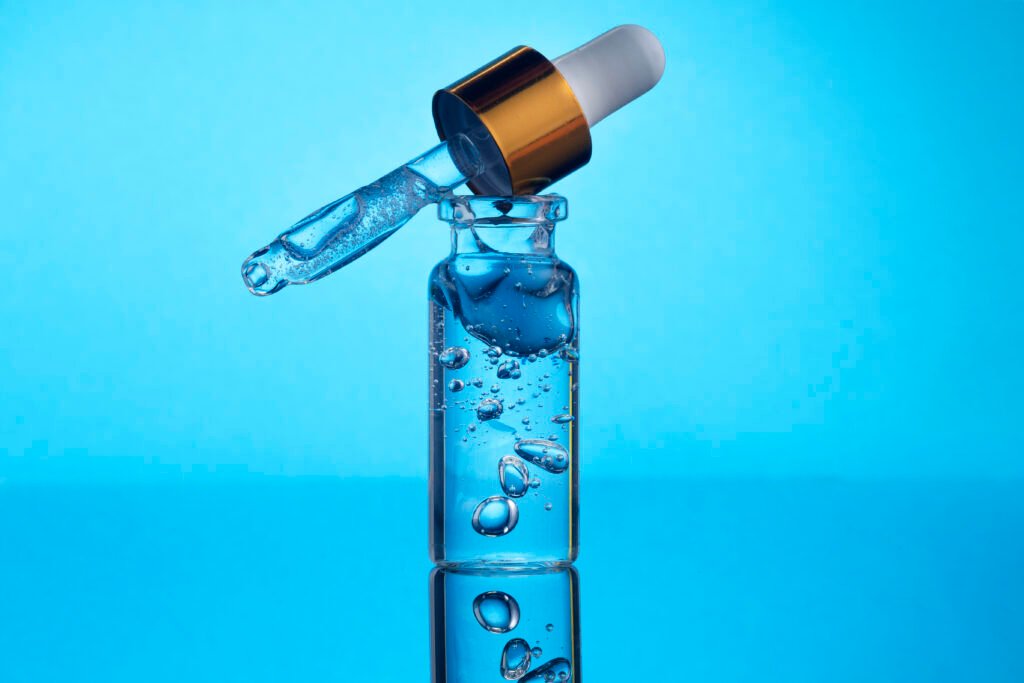What is Ampoule Skincare? And Using Tips- 2025

If you want to know “what is ampoule skincare?” I would say it’s a modern skin care missile. Do you know why I called the ampoule a skin care missile? Because just like a missile does not stop until it hits its target, ampoule skincare also does not stop until it solves your skin problems.
These skincare ampoules provide even more than any serum; they offer you a laser-like focus to reliably treat skin issues such as wrinkles, hyperpigmentation, or dehydration.
If you are ready to push away all your skin problems and welcome radiant skin from within, then let’s now enter the wonderful and fascinating world of ampoules. Let’s explore what ampoule offers for your skin and uncover the secrets to achieving your glowing skin. (I’ve talked about over 70 skincare facts in this post, which you can easily digest.)
What is ampoule skincare?
An ampoule used in skincare is a small, sealed vial that contains highly concentrated, powerful formulations designed for specific skin concerns such as hydration, brightness, or anti-aging. Due to the higher concentration of active ingredients, they are often considered a more intensive treatment compared to serums. They deliver a high concentration of active ingredients directly to the skin. It is mainly used to provide quick solutions for specific skin issues (such as dryness, dark spots, fine lines, dullness, etc.).
Skincare ampoule vs serum
Although both ampoules and serums are concentrated skin care products, ampoules typically contain a higher concentration of active ingredients than serums. Ampoules are targeted treatments used for short-term solutions to specific skin problems, whereas serums are typically used for daily maintenance and addressing broader concerns. Below is a simple explanation of the difference between Ampoule vs Serum:
Ampoule:
- Concentration:
Ampoules have a much higher concentration of active ingredients compared to serums. It is a powerful, intensive treatment. - Purpose of Use:
Usually used for special skin concerns (such as quick hydration, brightness, reducing spots or fine lines) for effective results in a short period. - Usage Method:
Not used daily. Designed to be used 2-3 times a week or during a skin emergency. - Packaging:
Comes in small bottles or vials (sometimes glass ampoules), as a small amount is very effective.
Serum:
- Concentration:
Serums have a slightly lower level of active ingredients compared to ampoules but are strong enough for regular use. - Purpose of Use:
Suitable for daily use to solve regular skin issues (such as keeping the skin bright, adding moisture, reducing spots, etc.). - Usage Method:
Can be used every morning and night. - Packaging:
Available in pump bottles or dropper bottles and comes in adequate quantities for daily use.
Benefits of Using Ampoules in Skincare
Simply put, ampoule is a powerful and reliable ingredient full of active elements for solving any skin concern of any skin type. Below are several important and effective benefits briefly explained:
- Highly Concentrated Active Ingredients
Ampoule contains extremely dense and potent active ingredients that work deep into the skin. It helps to quickly and effectively address specific skin problems such as dryness, uneven tone, fine lines, or acne marks. - Brings Instant Change to the Skin
With the use of ampoule, noticeable brightness, smoothness, and hydration appear on the skin usually within a few days. It creates a “boosting effect” on the skin. - Perfect Solution for Specific Concerns
For specific skin concerns such as hydrating, brightening, anti-aging, or acne control—different types of ampoules are available for each need. - Lightweight and Quickly Absorbed into the Skin
Ampoule is usually light, gel, or water-based, which gets absorbed into the skin quickly and does not give a sticky feel. - Works as a “Treatment Step” in Skincare Routine
When ampoule is added, the effectiveness of your routine increases significantly. If used before serum or moisturizer, the following products work even better on the skin. - Suitable for All Skin Types
Sensitive, oily, dry, or acne-prone—all types of skin can find a suitable ampoule.
When should you use an ampoule for your skin?
If you don’t know when and how to use ampoule for your skin, then you won’t be able to get its full effectiveness. That’s why I am explaining it below in a simple and detailed way:
When to use an ampoule?
Ampoule is usually most beneficial when used at night, because at night the skin’s regeneration process stays active. This makes the effectiveness of ampoule even more powerful on your skin. However, some light ampoules like brightening or hydrating can also be safely used in the morning. Benefits of Beauty Sleep for Your Skin
Using it 2–3 times a week is ideal, because ampoule is highly concentrated and it’s okay not to use it every day.
During special skin conditions (such as: breakouts, very dry skin, or dull appearance), it can be used as a targeted treatment. But remember, in a skincare routine, ampoule should be used before serum or essence.
How to use an ampoule? (Step-by-step)
1. Cleansing
Start any skincare routine by cleansing your skin. Use a gentle water-based or oil-based cleanser to wash your face.
2. Use toner
To balance the skin’s pH and help the ampoule absorb better, apply a light toner.
Apply ampoule
- Take only 2–3 drops of ampoule in your hand.
- Apply gently by tapping on the face. Do not rub.
- Apply on both face and neck so the whole area is covered.
Serum (if you use)
If you use serum after ampoule, you’ll get even better results.
Moisturizer
Finally, apply moisturizer so the active ingredients of the ampoule get locked in and your skin stays hydrated all night.
⚠️ Tips
Do a patch test before starting a new ampoule.
If your skin is highly sensitive, start by using it 1–2 times a week.
Some ampoules can be used both day and night (like hydrating ampoule) – follow the instructions on the packaging.

2 Comments